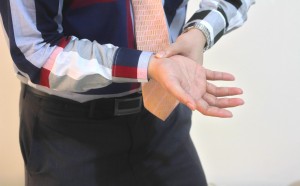New UK research shows employers the recommendations on how long staff should spending sitting down in the workplace. A study by Active Working CIC published in the British Journal of Sports Medicine states people should try to spend around two hours a day standing up during working hours.
Data quoted within the research paper suggests that on average office workers spend up to 75 per cent of the day sitting, with more than half of that lasting 30mins or more. This sedentary behaviour is common in a vast array of jobs, with many workers spending their days tied to a computer screen. Even common tasks like getting up to get documents from filing cabinets are being eradicated as employees can do more without having to leave their workstations.
The health impacts of leading a sedentary lifestyle are well-publicised, with the onset of conditions such as obesity, diabetes and heart disease increasing due to lack of movement.
What counts towards the “standing” goal?
Though the experts recommend standing for two hours a day, this doesn’t necessarily mean it all has to occur at once. These periods of standing or walking can include anything from getting up to visit to WC, to taking a walk at lunchtime or even simply getting a drink from the water cooler. Anything that breaks up long stretches of time spent sat in a chair counts towards the goal.
However, two hours of standing is actually only the first step. In fact, the researchers long-term recommendations include a goal of four hours of standing in a working day, or around half of the time employees spend at work.
How to encourage standing at work
Workplaces can encourage periods of standing in the workplace by helping employees to understand the benefits of getting out of the chair. Technology is enabling even phone-based employees to be more mobile with cordless handsets and headsets that allow staff to move around more easily. There are also sit-to-stand desk solutions which enable workers to increase the height of their desk to a standing height while working.
Other businesses may choose to encourage active living with health, wellbeing and exercise groups at breaks or lunchtimes, getting staff on-the-go at available opportunities.
Improving the health and wellbeing of your staff all adds up to happier, healthier, more productive employees who take less time off sick – and that’s just good for business.







